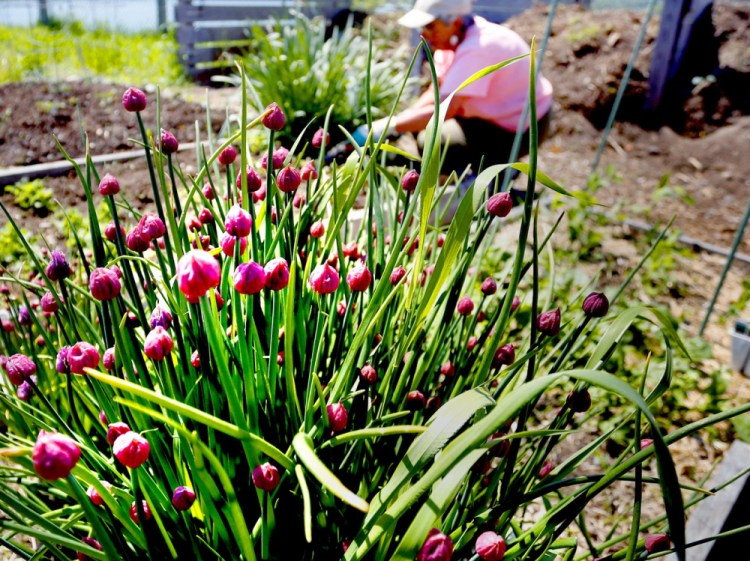People resist change, gardeners as much as anyone. Most of us were initiated into the joy of growing plants at a fairly young age, taught by relatives or neighbors in a tradition that goes back generations. And many gardeners still want to do things the way they were taught.
Some people have planted the same annuals in the same location on their property for years. The red impatiens stand out brightly against the gray of the house, they say, or the snapdragons look so bright lining the walkway.
On this day we both celebrate times long past, as in “Auld Lang Syne,” and make resolutions to improve ourselves for the future. I don’t want you to forget the past, but I do want you to be open to more change in the future.
Take something like crop rotation. Some gardeners in small plots plant the same vegetables in the same place every year. They have heard of crop rotation, but think it refers only to commercial farmers with many different fields. But crop rotation can work even in gardens as small as 4-by-8-foot raised beds.
If you planted beans or peas, which improve soil by fixing nitrogen, plant a heavy feeder, perhaps something in the squash or cabbage family, in that spot the following year.
Tomatoes, potatoes, peppers and eggplant all are in the nightshade family and susceptible to the same diseases. If you plant nightshades in the same spot in back-to-back years, you are more likely to have diseases such as blight.
And try new plants. Yes, I will plant Sun Gold and Celebrity tomatoes every year, because I have had success with them and like their flavor. But I also will plant some new (to me) tomatoes that sound good in a catalog just to see how they are.
Many gardeners hesitate to give up plants that research has shown are bad for the environment.
After my column two weeks ago on potential state regulations to ban the sale of invasive plants, I received calls and emails defending several plants on the list: multiflora roses, because the birds feed on them and the rose’s thorns protect birds from predators; bittersweet, because the berries are so attractive; burning bush because of childhood memories; red pygmy barberry because it isn’t really as bad as the full-sized one.
But I have suffered painful scratches removing multiflora roses that were strangling native pine trees, have painfully walked past barberry where it was a dominant understory plant in a Cape Elizabeth neighborhood near Fort Williams, have seen bittersweet climbing utility poles all over Maine and burning bush taking over some public parks.
Native plants can serve many of the same purposes as these invasives, if gardeners would be willing to accept them. Red physocarpus, or ninebark, is attractive over a longer period than burning bush because it has flowers as well as red foliage. Native serviceberry, chokeberry and viburnum have beautiful berries and can replace bittersweet.
As the climate changes – and the record-setting average high temperatures over the past decade prove it is changing, although naysayers still debate whether man is causing it – it may be possible to grow different plants locally. Maybe you can push the zones and grow southern magnolias and dogwoods in at least the coastal sections of Maine.
In recent years, more people are replacing at least part of their lawns with flowers or vegetables. I enjoy seeing people growing peppers, tomatoes, “Bright Lights” chard and other vegetables on the front lawn of a home, especially if the vegetable beds are well tended and mostly weed free. They are certainly more attractive than a Levittown house with a tiny, cookie-cutter lawn. Just because you’ve always grown grass in your front yard doesn’t mean you have to continue doing so.
Speaking of weeds, if you are open to change you can cut down the time you spend weeding. Larry Weaner, in the “Garden Revolution” book he wrote with Thomas Christopher, said you shouldn’t dig out weeds. When you do, you bring more weed seeds to the surface, where they will sprout. The end result? You have to weed again soon.
Instead, put the plants you want close together, snip the weeds at ground level, and let the good plants smother the bad ones.
Less weeding is a change I will embrace.
Tom Atwell is a freelance writer gardening in Cape Elizabeth. He can be contacted at 767-2297 or at: tomatwell@me.com.
Send questions/comments to the editors.



Success. Please wait for the page to reload. If the page does not reload within 5 seconds, please refresh the page.
Enter your email and password to access comments.
Hi, to comment on stories you must . This profile is in addition to your subscription and website login.
Already have a commenting profile? .
Invalid username/password.
Please check your email to confirm and complete your registration.
Only subscribers are eligible to post comments. Please subscribe or login first for digital access. Here’s why.
Use the form below to reset your password. When you've submitted your account email, we will send an email with a reset code.